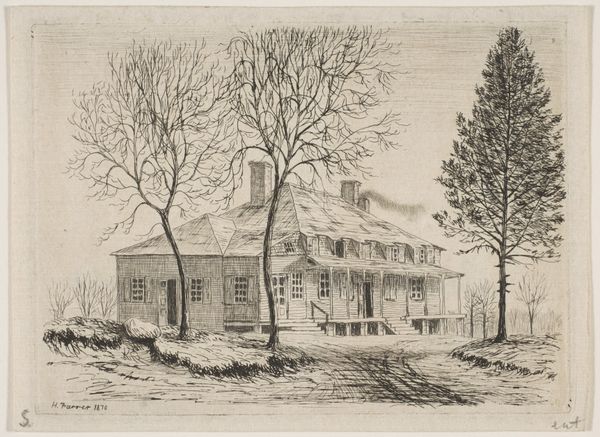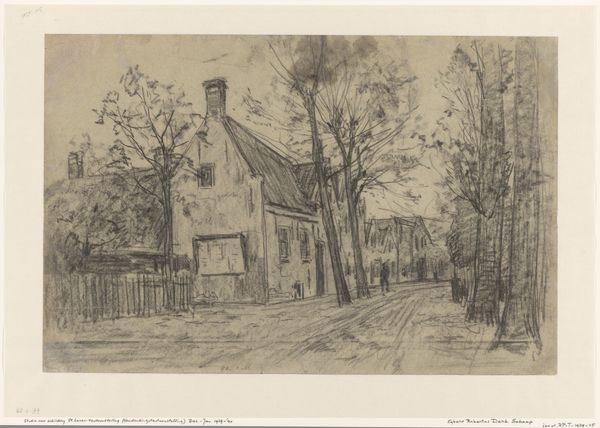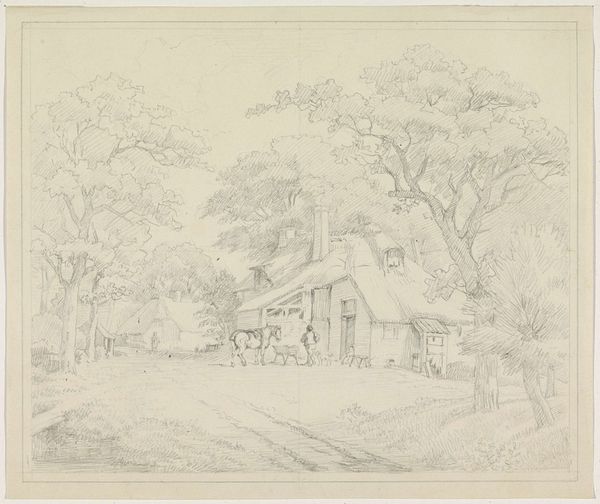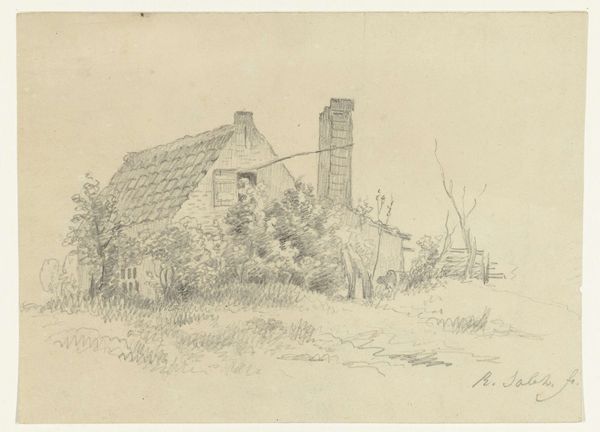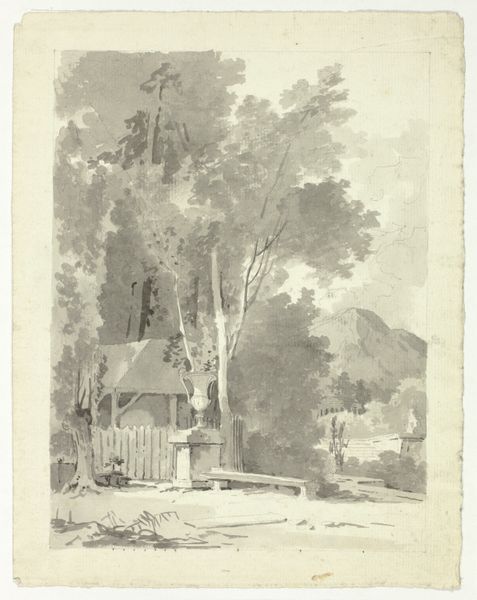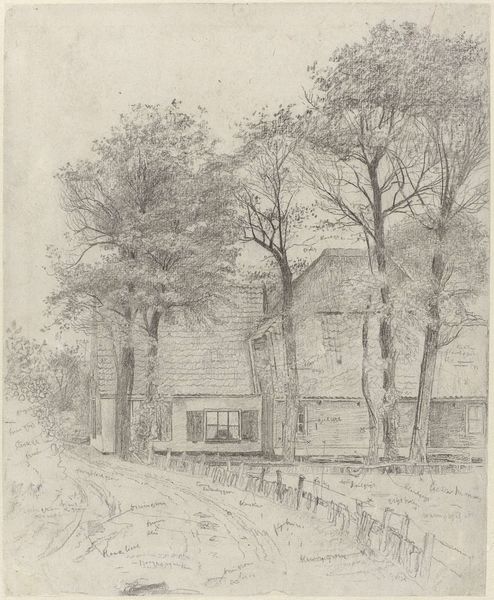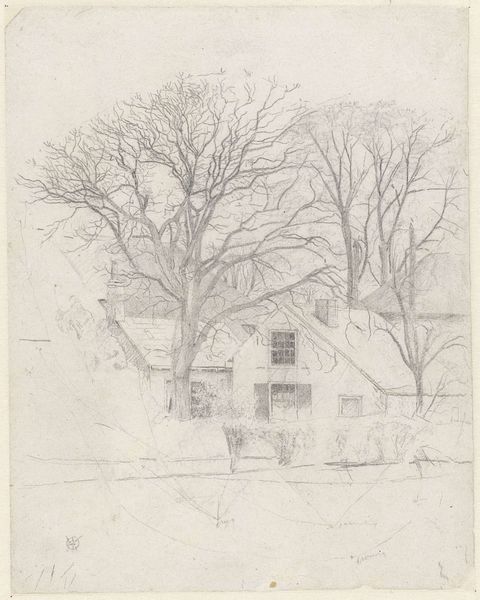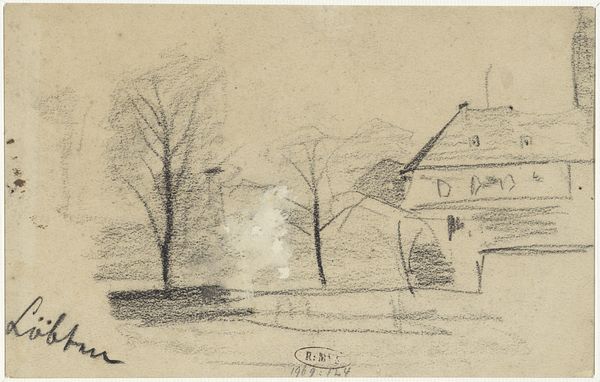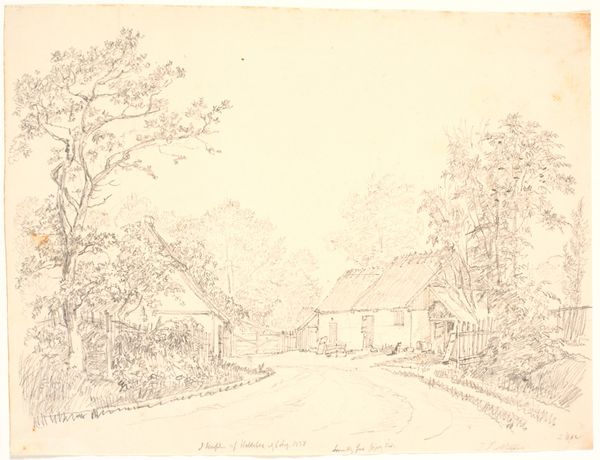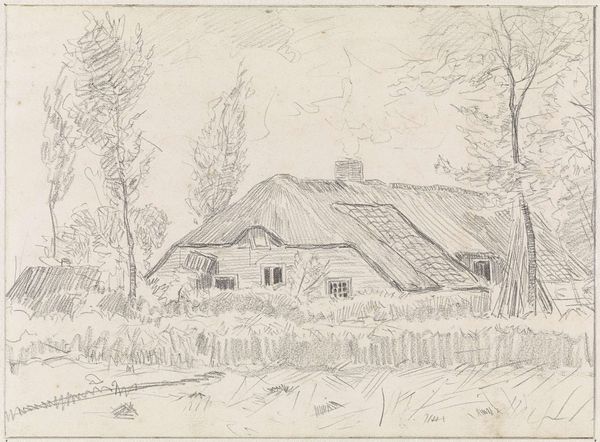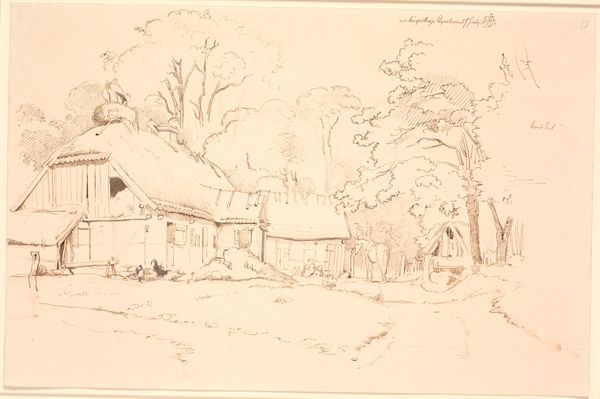
A Farmhouse with a Thatched Roof and Trees Beside a River 1825 - 1865
0:00
0:00
drawing, pencil
#
drawing
#
landscape
#
pencil
#
academic-art
#
realism
Dimensions: Overall: 12 1/16 x 17 3/8in. (30.6 x 44.1cm) frame: 18 x 24 in. (45.7 cm)
Copyright: Public Domain
Editor: We are looking at "A Farmhouse with a Thatched Roof and Trees Beside a River," a pencil drawing made by Constant Troyon sometime between 1825 and 1865. It's housed here at the Met. There's a dreamy quality to the light, but also such precision in the architectural details of the farmhouse itself. How do you interpret this work, considering the artist's technique and composition? Curator: The drawing’s strength resides in its skillful manipulation of line and value to evoke depth and texture. Notice how the artist uses subtle variations in pressure to create the illusion of three-dimensionality in the thatched roof and the foliage of the trees. How would you describe the interplay between the linear elements and the areas of shading? Editor: The linear aspects, particularly in the trees' branches and the outline of the farmhouse, provide a clear structure, almost a skeletal framework, while the shading softens the image and adds atmospheric perspective, making the background recede slightly. It gives it such a delicate balance. What does this formal relationship suggest? Curator: Precisely. This tension between structure and atmosphere gives the drawing a dynamic quality. We could say it signifies a desire to balance observation with artistic interpretation, realism with impression. Note also how the composition directs the eye. Where does your gaze naturally settle first, and how does it move through the picture plane? Editor: My eye is immediately drawn to the farmhouse. Its placement off-center creates a kind of visual imbalance, pushing my gaze across the scene towards the river and trees on the left. Curator: Exactly. This imbalance is not a flaw, but rather a deliberate strategy to engage the viewer. Troyon uses asymmetry to create visual interest and guide our eye through the landscape. How does this relate to the broader Realist movement? Editor: It highlights the beauty of ordinary scenes, using asymmetry to mirror how we naturally experience landscapes. The precision of the lines and tonal variations almost give it a photographic quality in places. Curator: An astute observation. Through a close examination of line, value, and composition, we can see how Troyon elevated a simple farmhouse scene into a nuanced work of art that invites contemplation and close inspection. Editor: I'll certainly look more deeply at asymmetry as a deliberate choice in landscape art going forward!
Comments
No comments
Be the first to comment and join the conversation on the ultimate creative platform.
